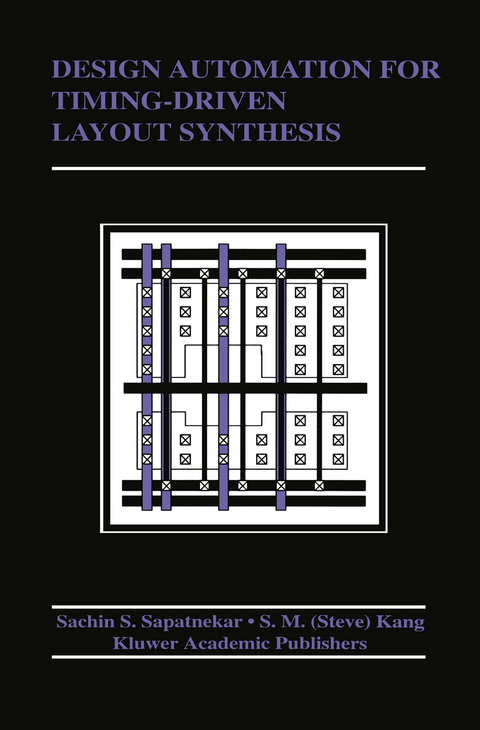
Design Automation for Timing-Driven Layout Synthesis
Springer (Verlag)
978-0-7923-9281-1 (ISBN)
1 Introduction.- 1.1 The Process of IC Design.- 1.2 Layout Styles.- 1.3 Timing-driven Layout.- 1.4 Outline of the Book.- 2 Delay Estimation.- 2.1 Introduction.- 2.2 Micromodeling — The RC Model.- 2.3 Macromodeling.- 2.4 Worst-case Delay Estimation.- 2.5 Delay Calculation at the Circuit Level.- 2.6 Posynomial Delay Modeling.- 2.7 A Case Study: iCONTRAST’s Timing Analyzer.- 2.8 Summary.- 3 Transistor Sizing Algorithms: Existing Approaches.- 3.1 Introduction.- 3.2 The TILOS Algorithm.- 3.3 The Method of Feasible Directions (MFD) Algorithm.- 3.4 Lagrangian Multiplier Approaches.- 3.5 Two-step Optimization.- 3.6 Other Approaches.- 3.7 Summary of Previous Approaches.- 4 A Convex Programming Approach to Transistor Sizing.- 4.1 Introduction.- 4.2 The Convex Programming Algorithm.- 4.3 Experimental Results.- 4.4 Summary.- 5 Global Routing Using Zero-one Integer Linear Programming.- 5.1 Introduction.- 5.2 Extracting Global Routing Information.- 5.3 Global Routing Phases.- 5.4 Global Routing on Medium-sized Arrays.- 5.5 Application to Custom Logic Layout.- 5.6 Handling Very Large Circuits.- 5.7 Runtime Complexity.- 5.8 Conclusion.- 6 Timing-driven CMOS Layout Synthesis.- 6.1 Introduction.- 6.2 A Methodology for Designing CMOS Standard Cells.- 6.3 The Metal-Metal Matrix (M3) Layout Style for Two level Technologies.- 6.4 iCGEN: A CMOS Layout Synthesis System for Three-level Metal Technology.
| Erscheint lt. Verlag | 31.10.1992 |
|---|---|
| Reihe/Serie | The Springer International Series in Engineering and Computer Science ; 198 |
| Zusatzinfo | XXI, 269 p. |
| Verlagsort | Dordrecht |
| Sprache | englisch |
| Maße | 155 x 235 mm |
| Themenwelt | Informatik ► Weitere Themen ► CAD-Programme |
| Technik ► Elektrotechnik / Energietechnik | |
| ISBN-10 | 0-7923-9281-7 / 0792392817 |
| ISBN-13 | 978-0-7923-9281-1 / 9780792392811 |
| Zustand | Neuware |
| Haben Sie eine Frage zum Produkt? |
aus dem Bereich


